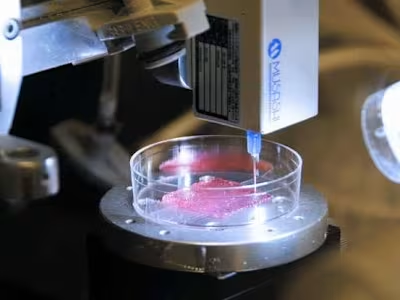Bio printing
For hundreds of years, cells have been understood the basic structural and functional unit of living
organisms. Can we use the same building blocks to create biological models that help us better study
biology, target Cancer, and develop new drugs ?.
Yes, Bioprinting is a growing technology with various applications in making Functional tissue
production to replace injured or diseased tissues .Building tissues from scratch to analyse and
understand new cell configuration could completely change the fundamental understanding in
biology.
STEPS IN BIOPRINTING:
1) Design : Typically, printing designs are crafted using computer-aided-design (CAD)
software.Users have the option to either start from scratch or make changes to existing
designs. These existing designs can come from patient/tissue scans or from other users.
2) Bioink selection:Choosing the right bioink is a crucial step in the bioprinting planning process.
The selection of a bioink depends on its printability (compatibility with the printer and print
resolution) and its impact on cell behavior. There are numerous commercially available
bioinks that can be easily combined with specific cells as well as biomaterial inks that can
provide structure or act as sacrificial materials, and suspension baths.
3) Cell selection:You also need to select the right type of cells for your bioink. These cells can
come from the patient themselves, or from a donor.
4) Printing:The bioink and cells are then loaded into a bioprinter, which is a machine that can
print them layer by layer onto a platform.
5) Maturation: After printing, the bioprinted tissue needs time to mature and develop its
function. This can be done in a bioreactor, which is a device that provides the tissue with the
nutrients and signals it needs to grow.
TYPES OF BIOPRINTING:
1) Jetting-based bioprinting
2) Extrusion-based bioprinting
3) Laser assisted Bioprinting.
Like this project
Posted Aug 4, 2024
It a newly developed technology in science
Likes
0
Views
0





